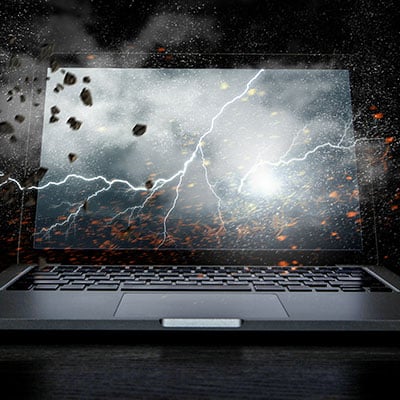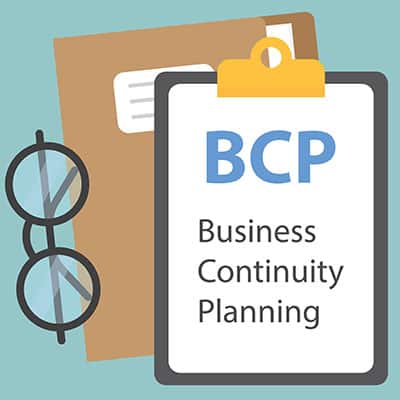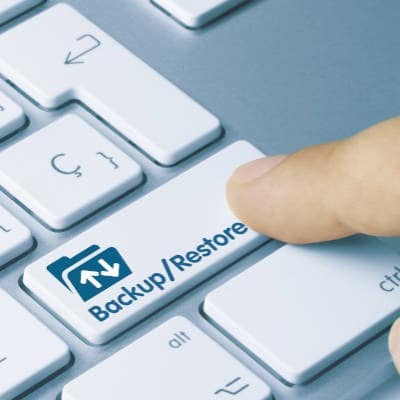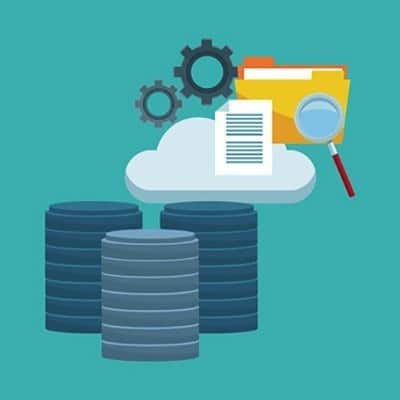We have all heard about disaster scenarios in which offices are struck by terrifying threats that put the organization on life support. However, the most devastating disasters don’t necessarily have to destroy your business’ office to really do measurable harm to your organization. All they have to do is disrupt your operations so profoundly that it can be a real challenge to recover.
There are many moving parts of a functional and successful business, all of which depend on access to its data. If you’re not prepared for a worst-case scenario in which your data gets wiped out, you’ll be in dire straits with no opportunities for recovery. If you take proactive action now, you can prevent a data loss incident from sinking your business.
There are a lot of things that can cause a disaster for your business. In fact, you may be surprised to learn that human error is the most prevalent cause for a business disaster. Not a flood, not a fire, not a global pandemic, but someone making a mistake, doing something negligent, or trying to sabotage your business.
Whether we like it or not, there is a lot that can go wrong in business, much of which could prevent you from accessing your company’s data infrastructure. Let’s explore some of the different scenarios in which your business will be glad it has a data backup and disaster recovery solution in place.
It makes sense that any kind of redundancy would be frowned upon, given that business operations today have become so focused on efficiency. The difference is that the redundancy that we are discussing here has an intended purpose. Let’s examine this intentional redundancy in action with the 3-2-1 Rule of data backup. The 3-2-1 Rule This “rule” is pretty generally accepted amongst IT professionals. It sums up to the following: 3. Three copies of your data should exist 2. Two of these copies are backups 1. One of these backup copies should be located offsite But why two backup copies? Wouldn’t one of them be mostly redundant? It would, and that’s the point. Consider the possibility that your on-site backup could be lost in the same disaster that destroys your original copy. Your backup isn’t going to be of any help then. What if you found out that your offsite data center suffered a disaster, and so your backup is gone, just as a minor data issue takes place in-house? Your second backup is just that, a backup to your backup. Plan C, when Plan B doesn’t work out. A Timely Message It isn’t hard to see why this kind of reliability is valuable to a business, considering what has been happening in the past few weeks with the COVID-19 outbreak. Businesses everywhere are either closing up shop or shifting to remote operations for the time being, and as this has been going on, business locations are being targeted. Theft and even vandalism can be very real causes of data loss, which means that properly backing up your data is a must. This situation also highlights one of the reasons that we really push the cloud as the best option for your backups. Not only is your data protected in the cloud, it is also accessible to your team, allowing them to work from home if need be until it is safe to return to normal working conditions. Of course, nobody should hope to have this happen, but not being prepared for it is just foolish. Again, we recommend the 3-2-1 Rule, as it practically guarantees that you aren’t without your data. If you need help setting up your backup solution, we can help with that, too. Call SRS Networks today to learn more about how working with us can ensure that your IT is reliably available to you when you need it. Reach out at (831) 758-3636.
What Is Your Data Worth? Whether you actively use it, or it just sits here, your data is worth quite a bit to your company. After all, your data is made up of a combination of all the work that your people have done, marketing information filled with PII, and sensitive information of your staff, prospects, and clients. What would happen if that data were to get stolen or lost? Let me tell you what it would mean by telling you a story. A nameless business rents out office space on the corner of two very busy streets. One day, shortly after everyone in the office had gone home for the day, a man driving a truck out of control, jumped the curb and ran directly into the building, destroying the company’s entire server room. The first thing you may think is, “Is he okay?” The second thought you have should be, “What does that have to do with their cybersecurity?” Hold that thought. In one scenario, the company has just onsite backups and when the truck blasts through the building’s facade and into the server room, those onsite backups are no use against the force of a runaway truck. All the hardware in the server room is destroyed. In another scenario, the company uses a BDR to back their data up and in the cloud, when the truck blasts through the server room, the hardware is destroyed, but the data is still available, backed up in the cloud. This business survives while the other fails. That right there is why the BDR is superior. How BDR Fits Into Cybersecurity Strategies For some, the retention of data would be value enough out of a BDR, but for an organization that is concerned as much in the continuity of their business as they are on the security of their data, the BDR offers a way to secure critical data outside your organization’s network. Cybersecurity strategies dictate that all data that is vital to the sustainability and continuity of your business be stored in multiple places; specifically, outside of your network. The BDR with its ability to push data to outside data centers fulfills this requirement, and helps promote data security. Furthermore, because the backups are stored offsite and outside the network, it works as a failsafe against critical situations like a ransomware attack. If you would like to ensure that your data is secure and available in the case of a disaster, whether it be a runaway truck crash or ransomware, contact the IT consultants at SRS Networks to talk about getting your organization a BDR. Call us today at (831) 758-3636 for more.
Disasters have many forms. The first step to excellent disaster recovery planning is knowing what you are preparing for. These are scenarios that could affect your business without warning. Equipment Failure – You arrive at the office, hit the power button on your computer and go grab a cup of coffee. You come back and your computer didn’t turn on, so you hit the power switch again, but nothing happens. Your PC’s motherboard has fried. Imagine losing the entirety of documents, files, and contacts on your computer. This could happen at any given moment to any of us. The only way to avoid catastrophic data loss is by expecting it to happen and being prepared. Staff Unavailability – Bob has been working on a company project for months on end but has told coworkers numerous times that he is unsatisfied with his role within the company. His project is a key element in the companies next steps to success. One day, Bob stops showing up to work without notice. Does your business’ disaster recovery plan accommodate for unexpected staff unavailability whether it be an accident, a personal emergency, or a situation like Bob? User Error – Bob’s replacement, Rob, is taking over the company project. It’s ready to be presented and implemented. Rob accidently deletes the files when trying to transfer them to another device. A simple accidental deletion could quickly turn into a disaster without proper planning. Don’t let poor planning rob your business. Natural Disasters – When you hear disaster, this is likely the first thing that comes to mind. Natural disasters affect nearly every part of the world. Whether it’s a 100-year-flood that strikes unexpectedly, a hurricane that veers off of its projected path, or even something as simple yet devastating as high winds; your disaster recovery planning should accommodate situations as destructive as these. Malware – Malware is the most technologically advanced scenario mentioned thus far. These evolved viruses constantly plague businesses across the globe. Staying vigilant and having a successfully tested disaster recovery plan means these vicious disasters transform into an annoyance rather than a business-destroying attack. True Planning Means Thorough, Possibly Risky Testing A plan as previously mentioned is a proposal of a course of action you will take in the event of, in this case, disaster. Proposing a course of action is only the first step in disaster recovery planning. The second step is testing this plan. Which would you prefer: testing your recovery plan in the wake of a disaster, or testing your recovery plan long before a disaster strikes? There are many different ways to evaluate the proposed processes outlined in your disaster recovery plan. These include the following: Walkthrough Test: A walkthrough test is a simple way to review and share your disaster recovery plan. It allows you to discuss the plan with everyone involved and revise it as needed. Walkthrough tests are quick and should occur regularly to remind employees of your procedure and inform them of any changes that have been made. Tabletop Test: You are your own character in this tabletop game. Each team member is given the same hypothetical disaster and must explain their role in recovering. This test should be elaborate and realistic to aid in unveiling possible shortcomings in the disaster recovery plan. Parallel […]
The late American author Kurt Vonnegut once wrote, “New knowledge is the most valuable commodity on earth. The more truth we have to work with, the richer we become.” Written in the 20th century, it has been put in practice by 21st century businesses. As the Internet has grown, the amount of companies expanded, and the amount of data that those companies collect has grown exponentially, especially now that there is a market for such data.








